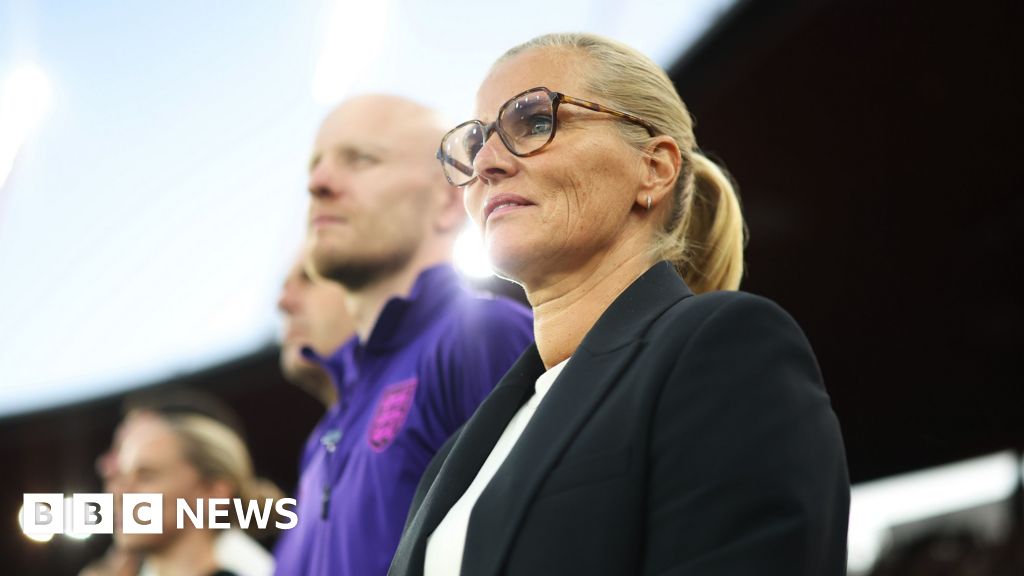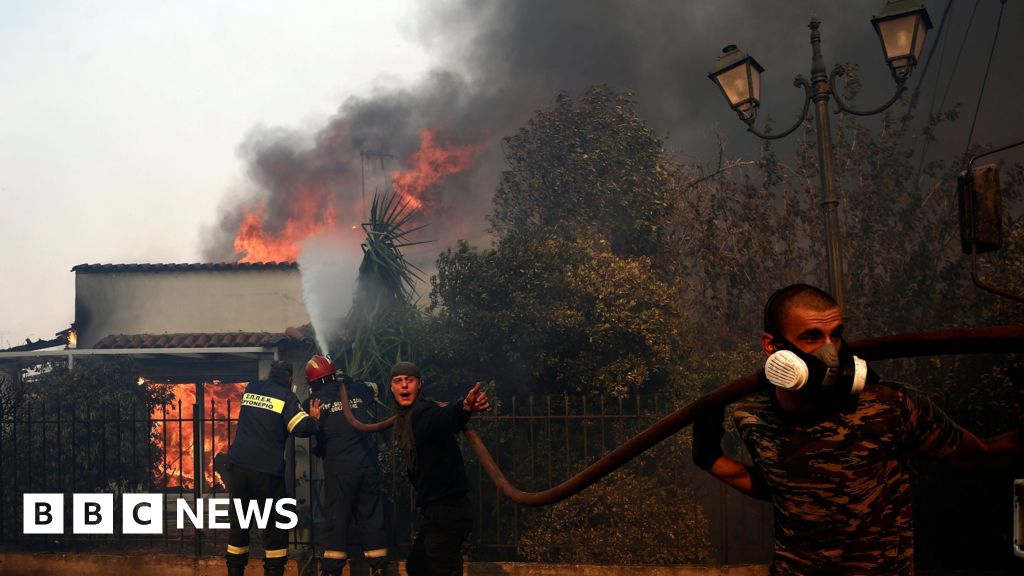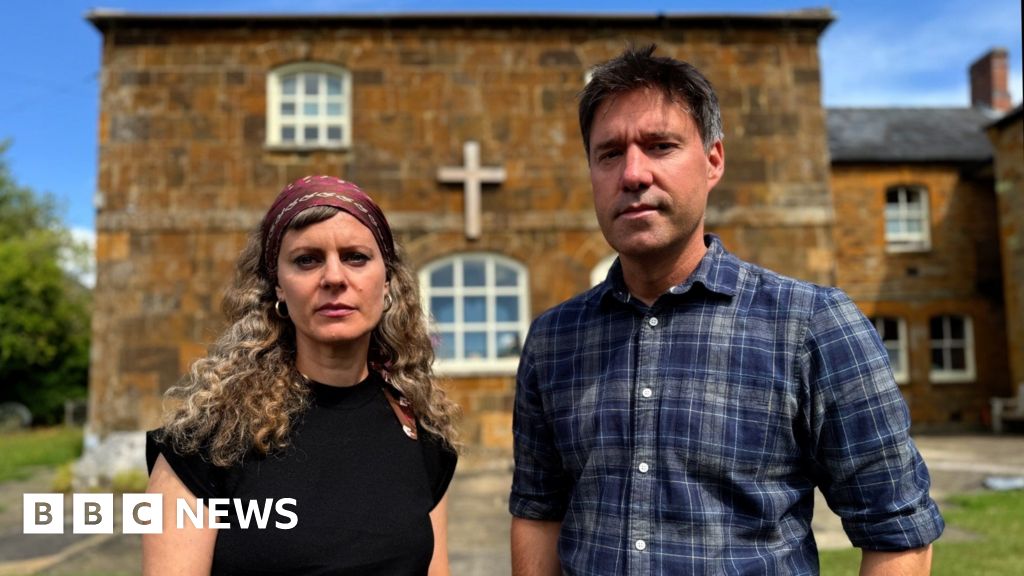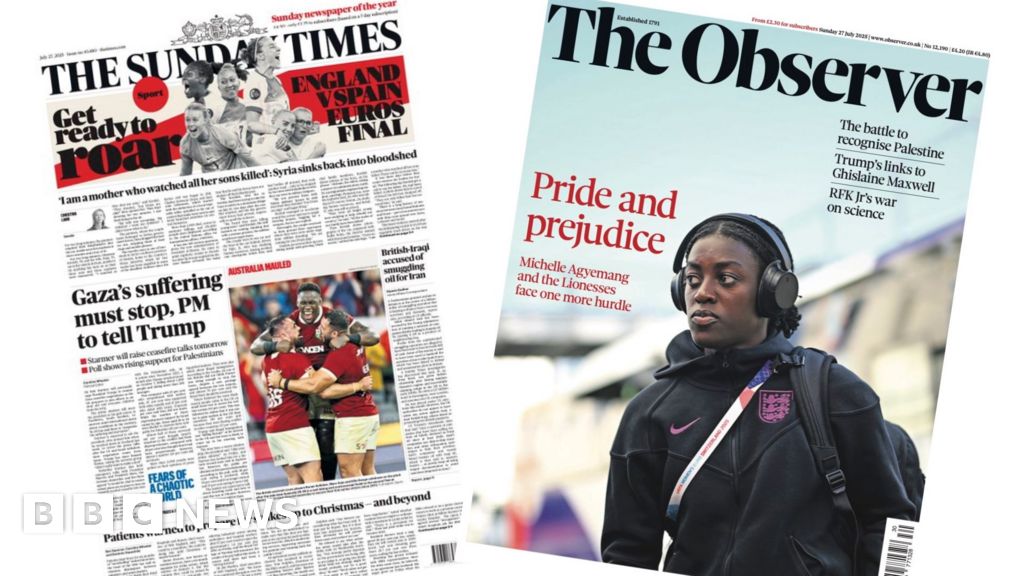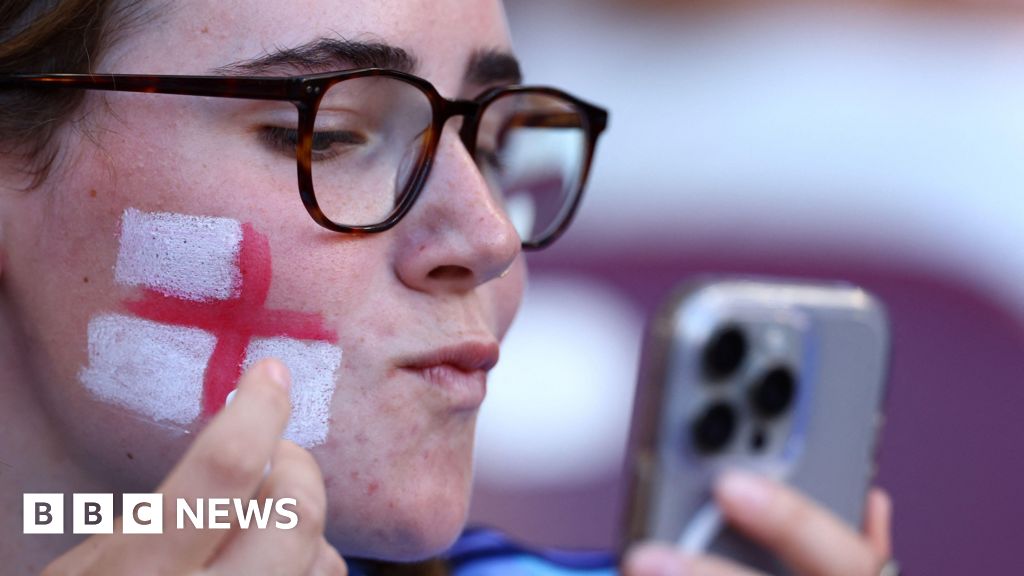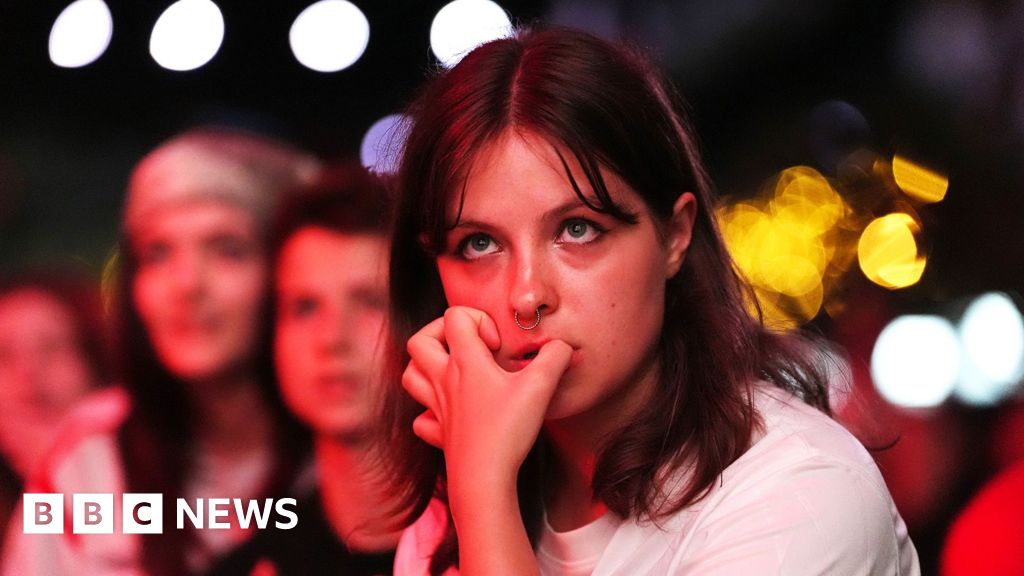
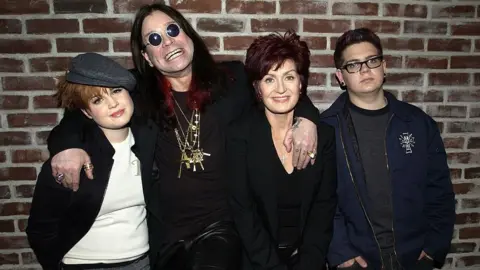 Getty Images
Getty Images
Fans around the world have been mourning Black Sabbath lead singer Ozzy Osbourne as a musical legend - but for many, the 76-year-old's passing also marked the loss of an early 2000s reality television icon.
Decades after his rise to heavy metal fame, the self-styled Prince of Darkness, his wife Sharon and their two then-teenage children Kelly and Jack starred in MTV's The Osbournes, pioneering what the show's producers describe as a "reality sitcom".
Before the Kardashians and the Real Housewives, there was Ozzy - battling with the TV remote in his Beverly Hills mansion.
Somehow, the blend of ultra-mundane life and spectacular fame worked - the show went on to win an Emmy and run for four seasons, from 2002 to 2005.
"The Osbournes kicked off a wave of celebrity-driven reality TV," Andy Dehnart, president of the Television Critics Association and editor of the Reality Blurred website, told the BBC.
According to The Osbournes executive producer Greg Johnston, the creators didn't know exactly what they were aiming for when they began filming.
When The Osbournes premiered, most reality TV was based on competition formats populated with casts of everyday people, such as Survivor, the Bachelor and the Real World.
And though a programme centred on celebrities could have focused on the excesses of a rock-star's life, The Osbournes instead followed a family as they loaded the dishwasher or exercised in the home gym.
"It was going to be a bit of an experiment," Mr Johnston told the BBC.

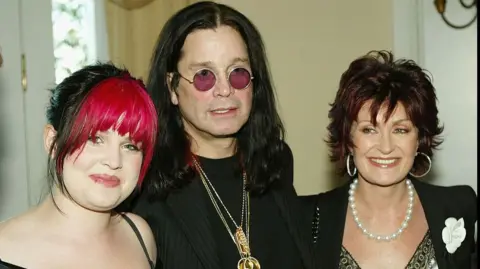 Getty Images
Getty Images
Many of the producers who worked on The Osbournes had come from the sitcom world, and transferred that experience to portraying this real-life family.
"When you watch the intro credit sequence, it feels very like The Partridge Family or Father Knows Best," said Dr Brandy Monk-Payton, an assistant communication and media professor and television researcher at Fordham University.
Ozzy played the part of the "loveable buffoon", Dr Monk-Payton said, with The Osbournes segment producer Henriette Mantel describing the middle-age rocker as "Ward Cleaver from Leave It To Beaver on acid".
The approximately 20-minute episodes captured silly antics, like the time Sharon threw a baked ham over the fence to retaliate against a loud neighbour; their rock-and-roll lifestyle, like Ozzy rehearsing for a world tour; as well as slapstick family frustrations, like Ozzy's repeated struggles with tripping over the dog bowl.
"It was a normal family, but it was wild and it was just crazy," Ms Mantel told the BBC. And what came through on screen is that "they truly loved each other".
In that sitcom set-up, Kelly and Jack fulfilled the roles of a squabbling brother and sister, executive producer Jeff Stilson told the BBC, while Sharon was "the mom trying to hold it all together".
In many ways a typical dad, Ms Mantel recalled that "Ozzy just wanted to... lay on the sofa and watch the History Channel".
That tension between the familiar and the unfamiliar is exactly what draws in reality TV viewers, according to Dr Danielle Lindemann, a professor of sociology at Lehigh University and the author of True Story: What Reality TV Says About Us.
"We want to see the outrageous, the zany, but at the same time, we don't want it to be so removed from our lives that we can't relate at all," she said.
According to MTV, The Osbournes was its highest-rated show when it aired. The second season's premier in late 2002 drew 6.6 million viewers – up 84% from the first season, Billboard reported at the time, citing the network.
The success of this new format paved the way for shows like Newlyweds: Nick and Jessica, which premiered in 2003, Keeping Up With the Kardashians in 2007 and Bravo's many Real Housewives properties.

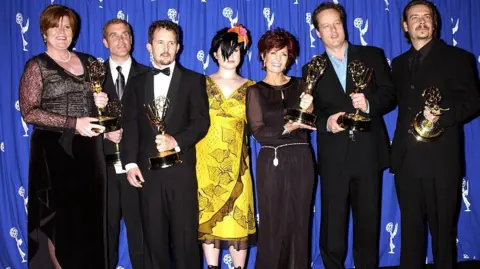 Getty Images
Getty Images
The real in reality
In today's TV landscape, "reality" is often presented with a wink.
But on the set of The Osbournes, the idea of capturing regular life was so new, it didn't yet occur to producers how far they could push the narrative. Producers say the stories they captured were real, at least in the beginning, and usually based on about three weeks of footage per episode. These days, reality TV usually takes just four days to shoot a single episode.
According to Mr Johnston and Mr Stilson, filming went on constantly each day until the family went to sleep. "They forgot the cameras were there," Mr Stilson said.
TV critic Mr Dehnart cautioned: "There's still obviously layers of production and construction there that we're not seeing."
That hands-off approach changed, as more viewers tuned in. For example, Kelly and Jack later revealed that one plot line involving a dog therapist was set up for the show.
According to editor and producer Charles Kramer, working on The Osbournes meant creating a new reality TV genre in real time.
Tropes such as the editing of raw footage to create a narrative and the use of the "Frankenquote" - editing a character's lines from one scene into another - were all honed on The Osbournes, he told the BBC.
"Now everybody uses those terms," he said.
Mr Kramer took what he learned on The Osbournes to go on to work on another celebrity-driven programme, The Girls Next Door, though other creators such as Mr Stilson said they no longer wanted to be a part of what the reality-TV universe was becoming.
As Dr Lindemann points out, it can feel normal for fans to access celebrities' personal worlds today, often through social media.
But in the early 2000s, the inner machinations of celebrity life portrayed in The Osbournes, such as appearances on the Tonight Show and Sharon's management of the business-side of Ozzy's music, were much more mysterious to the average person.

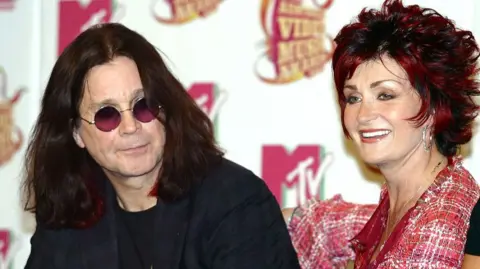 Getty Images
Getty Images
"Being able to see someone who's a superstar... in this somewhat relatable context was new and refreshing, because it's not like people were following Ozzy on Twitter," Dr Lindemann said.
That kind of real-life access took its toll, as Ozzy told Metal Hammer in 2022 that he felt like a "laboratory rat" after spending three years with cameras following him around, though he said he was "not ashamed" of the programme.
"It got to the point where I was falling apart emotionally," he told the magazine, "because you can't... relax".
Spending their teenage years in the spotlight also wasn't without difficulty for Jack and Kelly, who wrote about her struggles with drug use in books released in 2009 and 2017.
"I don't think either one of us was really prepared for" the fame, Kelly told ABC's Good Morning America in 2017.
"That's a difficult situation to put teenagers in. But they handled it as well as anybody could," Mr Stilson said.

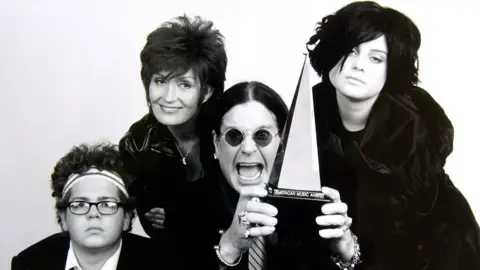 Getty Images
Getty Images
After 52 episodes across four seasons, The Osbournes finally ended in 2005. But Mr Stilson wonders if they should have ended production after the first season. It became a "darker show" after that, he said, as Sharon was diagnosed with cancer and Ozzy "fell off the wagon" with drugs and alcohol.
For Mr Kramer, part of the appeal for audiences was Ozzy's "regular folk" working-class background - and for Americans, a fascination with Ozzy's "heavy" Birmingham accent.
Ozzy seemed to embrace that hard-scrabble British persona who appeared on US screens.
"You know, when they show it in England, there are no bleeps (over the swears). It isn't as much fun," he told Rolling Stone in 2002.
Mr Stilson doesn't believe that hard edge is what made the show successful.
"The success of the show was the sweetness of the family and the ridiculous dynamic," he said.
"It was about a functional family - that cursed a lot."

 9 hours ago
3
9 hours ago
3


